 1988 Alfa Romeo 75 (162 B, facelift 1988) Dimensions, Size & Specs
1988 Alfa Romeo 75 (162 B, facelift 1988) Dimensions, Size & SpecsMeasurements of the 1988 Alfa Romeo 75, engineered for optimal performance and comfort
| Dimensions | |
|---|---|
| Length: | 4330-4420 mm170.5-174.0 in14.2-14.5 ft |
| Width: | 1630-1660 mm64.2-65.4 in5.3-5.4 ft |
| Height: | 1400 mm55.1 in4.6 ft |
| Ground Clearance: | 120 mm4.7 in0.4 ft |
| Trunk Capacity: | 380-500 liter13.4-17.7 cu ft |
| Weight Specifications | |
| Curb Weight: | 1090-1300 kg2403-2866 lbs |
| Maximal permitted Weight: | 1515-1725 kg3340-3803 lbs |
| Roof Load: | 80 kg176 lbs |
| Tire Specifications | |
| Rims Sizes: | 14-inch rims:
|
| Tire Sizes: |
|
The 1988 Alfa Romeo 75 (gen 162 B facelift) is a mid-sized sedan produced between 1985 and 1992, known for blending Italian style with solid engineering and practical design. This generation of the Alfa Romeo 75 features a length varying from 4330 to 4420 mm (170.5 to 174 inches), a width between 1630 and 1660 mm (64.2 to 65.4 inches), and a consistent height of 1400 mm (55.1 inches). Its relatively low ride height of 120 mm (4.7 inches) underscores its sporty sedan character. Weighing between 1090 and 1300 kg (2403 to 2866 lbs) curb weight, with maximum weight ranging from 1515 to 1725 kg (3340 to 3803 lbs), the Alfa Romeo 75 is agile yet stable on the road. The luggage capacity ranges from 380 to 500 liters (13.4 to 17.7 cubic feet), offering practical cargo space for everyday use. This model supports a roof load of up to 80 kg (176 lbs), suitable for additional cargo carriers or roof boxes. The vehicle rides on various rim sizes, including 6.5J x 14, 6J x 15, and 13-inch variants, paired with tire sizes from 185/70 R13 up to 195/55 R15, balancing handling dynamics and ride comfort. Overall, the 1988 Alfa Romeo 75 combines compact executive car dimensions with sporty styling cues, making it a classic choice for enthusiasts who appreciate both performance and practicality.
Discover the standout features that make the 1988 Alfa Romeo 75 a leader in its class
Have a question? Please check our knowledgebase first.
The Alfa Romeo 75 (162 B) facelift 1988 model has a length ranging from 4330 mm to 4420 mm. In imperial units, this translates to approximately 170.5 inches to 174 inches. The variation in length depends on specific trims or configurations such as optional bumpers or slight design changes during the facelift. This length places the Alfa Romeo 75 firmly in the compact executive saloon segment, offering a balance between maneuverability in urban environments and sufficient interior space for passengers.
The width of the Alfa Romeo 75 (162 B) facelift 1988 ranges between 1630 mm and 1660 mm, which is about 64.2 inches to 65.4 inches. This relatively modest width allows for comfortable seating for front and rear passengers while maintaining good agility on the road, which is useful for navigating narrow European streets. The slightly varied width can be attributed to different trim options, side mirrors, or optional moldings. Overall, the width plays a vital role in the vehicle's sporty yet practical character.
The height of the Alfa Romeo 75 facelift 1988 is 1400 mm, approximately 55.1 inches. This height is typical for sedans of its era, providing reasonable headroom and a low, sporty profile that contributes to better aerodynamic performance. Although it is not as tall as many modern sedans, the design prioritizes driver engagement and style over overly spacious vertical headroom. Passengers generally experience adequate comfort, though taller individuals might find the rear headroom slightly limited.
The curb weight of the Alfa Romeo 75 (facelift 1988) ranges from 1090 kg to 1300 kg (about 2403 lbs to 2866 lbs), while its maximum weight capacity spans from 1515 kg to 1725 kg (approximately 3340 lbs to 3804 lbs). The relatively light curb weight, especially by today's standards, contributes to agile handling, responsive steering, and improved fuel efficiency. The gap between curb and maximum weight indicates its ability to carry passengers and cargo effectively without compromising drive quality. This weight range supports the car’s sport-oriented driving character while maintaining practical usability.
The luggage capacity of the Alfa Romeo 75 (162 B facelift) ranges from 380 liters to 500 liters, roughly 13.4 to 17.7 cubic feet. This generous space in the sedan’s trunk allows for convenient storage of daily items, groceries, or luggage for extended trips. The variation depends on whether the rear seats are folded (if available) or specific trim configurations. The ample boot capacity enhances the car’s practicality for families or individuals seeking a sporty yet versatile vehicle.
The Alfa Romeo 75 facelift 1988 has a ground clearance of 120 mm (approximately 4.7 inches). This relatively low ride height supports better handling and a sporty ride by lowering the center of gravity, which improves stability in corners and at speed. However, such clearance demands caution on rough roads, speed bumps, or steep driveways to avoid scraping the underbody. Suitable for mostly urban and well-maintained roads, this ride height balances sportiness with everyday usability.
Yes, the Alfa Romeo 75 facelift 1988 can comfortably fit into a standard residential garage. Typical garage dimensions in many regions range from about 2400 mm to 3000 mm width (94 to 118 inches) and about 4800 to 6000 mm length (189 to 236 inches), which exceed the maximum dimensions of this car. With a length between 4330 mm to 4420 mm (170.5 to 174 inches) and a width up to 1660 mm (65.4 inches), it allows enough clearance around the vehicle for door opening and maneuvering, making it practical for home parking without tight constraints.
The Alfa Romeo 75 facelift 1988 offers rim sizes of 6.5J x 14, 13 and 6J x 15, combined with tire sizes such as 195/60 R14, 185/70 R13, 195/55 R15, and 195/70 R14. These tire and rim combinations contribute to a balance between ride comfort, grip, and handling. Larger wheel options, like the 15-inch rims, offer improved road holding and a sportier feel, while smaller rims emphasize comfort and practicality. The tire widths and aspect ratios are well-matched to the vehicle's chassis and suspension setup, ensuring confident cornering and stable braking performance.
Compared to its predecessor, the original Alfa Romeo 75 launched in 1985, the facelifted 1988 version holds similar dimensions but features subtle updates in styling and refinement. Length and width remained mostly unchanged, ranging between 4330 mm to 4420 mm in length and 1630 mm to 1660 mm in width, maintaining the compact executive sedan profile. Weight variations often depended on trim and equipment upgrades during the facelift period. The facelift brought aerodynamic tweaks and updated interiors, improving the vehicle's appeal and usability without drastically altering size or curb weight.
The Alfa Romeo 75 facelift 1988 stands as a compact executive sedan with dimensions that are competitive but slightly more compact than some rivals, such as the BMW 3 Series (E30) or Audi 80/90 of the same era. With a length ranging from 4330 mm to 4420 mm and a width between 1630 mm and 1660 mm, it is often slightly shorter and narrower than some German rivals, contributing to nimble handling. Its curb weight between 1090 kg and 1300 kg is relatively light compared to similar cars, resulting in more engaging driving dynamics. The Alfa’s design emphasizes sportiness and driver involvement, differentiating it from some competitors that favored a more comfort-oriented approach.
Discover similar sized cars.
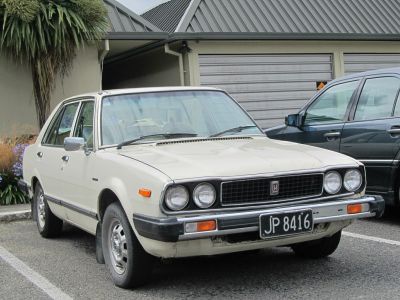
| Production: | 1976-1981 |
|---|---|
| Model Year: | 1976 |
| Length: | 4345 mm171.1 in |
| Width: | 1620 mm63.8 in |
| Height: | 1360 mm53.5 in |
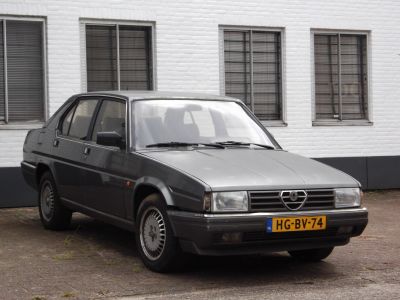
| Production: | 1984-1987 |
|---|---|
| Model Year: | 1984 |
| Length: | 4391 mm172.9 in |
| Width: | 1638 mm64.5 in |
| Height: | 1420 mm55.9 in |
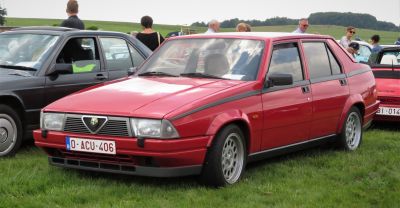
| Production: | 1985-1990 |
|---|---|
| Model Year: | 1985 |
| Length: | 4330-4420 mm170.5-174.0 in |
| Width: | 1630-1660 mm64.2-65.4 in |
| Height: | 1400 mm55.1 in |

| Production: | 1991-2005 |
|---|---|
| Model Year: | 1991 |
| Length: | 4385-4428 mm172.6-174.3 in |
| Width: | 1674 mm65.9 in |
| Height: | 1415 mm55.7 in |
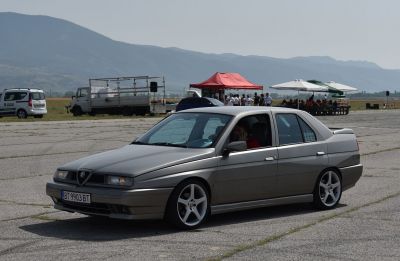
| Production: | 1992-1998 |
|---|---|
| Model Year: | 1992 |
| Length: | 4443 mm174.9 in |
| Width: | 1700-1730 mm66.9-68.1 in |
| Height: | 1425-1440 mm56.1-56.7 in |

| Production: | 1998-2002 |
|---|---|
| Model Year: | 1997 |
| Length: | 4467 mm175.9 in |
| Width: | 1700 mm66.9 in |
| Height: | 1425 mm56.1 in |

| Production: | 2000-2003 |
|---|---|
| Model Year: | 2000 |
| Length: | 4425 mm174.2 in |
| Width: | 1695 mm66.7 in |
| Height: | 1445 mm56.9 in |
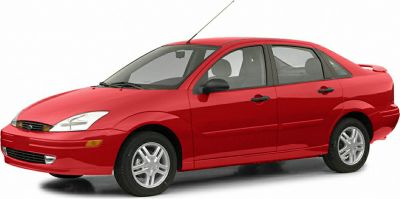
| Production: | 1999-2004 |
|---|---|
| Model Year: | 2000 |
| Length: | 4442-4450 mm174.9-175.2 in |
| Width: | 1699 mm66.9 in |
| Height: | 1430 mm56.3 in |
